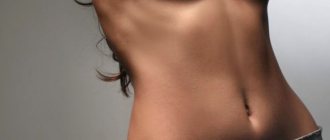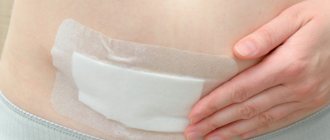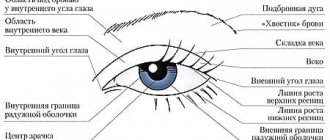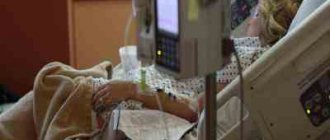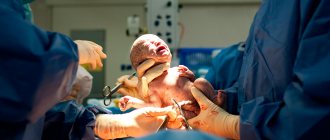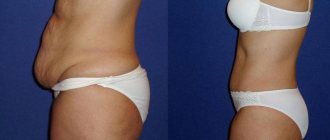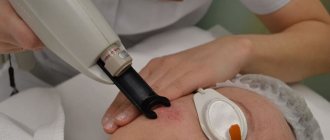Bearing and giving birth to a child is a joyful and important event for every woman, but inevitable changes in the figure are also associated with this period.
After childbirth, it is not always possible to easily return to your previous shape on your own. Hormonal changes in the body are accompanied by weight gain, stretch marks and sagging skin on the abdomen.
To get back in shape, some girls just need to switch to a diet and exercise, but sometimes the above methods do not work. In this case, you should pay attention to abdominal correction using plastic surgery.
Tummy tuck after childbirth is an operation aimed at improving the shape and reducing the size of the abdomen. This can also be a complex of operations, if there are indications for this.
Most often, the surgeon has to resort to abdominoplasty, with which you can tighten the belly that has sagged after childbirth and remove stretch marks, repair the stretched rectus muscles that form diastasis, and bring your figure to a more attractive and seductive shape.
Liposuction of the abdomen, and in some cases lipofilling, may also be required. to perfect your figure. It is also very common to correct scars after a caesarean section.
Indications for tummy tuck after childbirth
Pregnancy and childbirth change the figure of almost every woman, not for the better. Let's look at the cases in which you can resort to plastic surgery:
- Having large stretch marks in the abdominal area . After childbirth, tissue tears persist, which deprives you of aesthetic and psychological satisfaction with your figure.
- Decreased abdominal muscle tone . As the baby grows during pregnancy, the abdominal muscles, like the skin, stretch. But, unfortunately, they do not always tone up after the birth of a child, subsequently forming diastasis of the anterior abdominal wall, which must be removed surgically.
- Changed position of the navel, its prolapse or displacement . Due to strong stretching of the skin, the navel may move lower or hide behind folds.
- Stretching and fat deposits in the abdominal area . The formation of a skin apron and the overhang of loose skin does not please any girl in the reflection. Unfortunately, neither diet nor exercise can get rid of this excess skin.
- Presence of rough scars from caesarean section . Often I see patients who have undergone a cesarean section with, to put it mildly, unsightly scars. In this case, there is a bulging above the scar, and vice versa, a retraction under it. This appearance may indicate inaccurate alignment of the wound edges during suturing. Although there are options, everything is very individual. Sometimes overhanging the scar is caused by excess subcutaneous fat and simple liposuction can solve the problem. Sometimes the scar itself is wide and unaesthetic and requires correction.
Preparing for surgery
During the initial consultation, the surgeon examines and evaluates the condition of the abdominal skin, the volume of subcutaneous fat, muscle tone and position, and also asks the patient what results he expects. After this, the doctor determines the optimal method of tummy tuck and prescribes a mandatory examination.
The minimum list of analyzes and studies includes:
- general blood and urine tests;
- ECG;
- biochemical blood test, coagulogram;
- chest x-ray or fluorography;
- blood tests for markers of viral hepatitis, HIV, Wasserman reaction.
Also, in preparation for tummy tuck, the doctor gives the following recommendations:
- avoiding taking medications that interfere with blood clotting (only in consultation with your doctor);
- refusal to drink alcohol;
- limiting time spent in the sun and refusing to visit the sauna or solarium.
Types of abdominoplasty
The method of surgical intervention is determined taking into account the individual characteristics of the patient’s figure after childbirth. The choice of type of abdominoplasty can be influenced by a fairly large number of factors. It is very important to consider whether there is diastasis or hernias. Among the types of abdominoplasty, there are two main types: classic abdominoplasty and mini abdominoplasty.
Mini abdominoplasty is aimed at correcting minor changes in the lower abdomen without transferring the belly button. The essence of the operation is to eliminate mild ptosis of the abdominal tissue and hernias in the area of the white line of the abdomen. The main difference in this method is the absence of navel transfer.
The technique of miniabdominoplasty is very similar to classic abdominoplasty:
- First, the surgeon applies preoperative markings.
- After which the patient is transferred to the operating room and, under anesthesia, incisions are made in the bikini area and the stretched skin on the abdomen is resected.
- Strictly according to the markings, a skin-fat flap is peeled off to the level of the navel, and hernias are eliminated if necessary.
- Next, excess skin is identified and excised. After this, sutures are applied in layers, drains are installed and sterile dressings are applied.
Classic tummy tuck is a surgical operation in which the surgeon completely removes all unwanted centimeters of sagging skin, restores the anatomy of the abdomen and its correct shape. It also tightens the skin of the abdomen and moves the navel to a new correct place. During the operation, the surgeon additionally sutures the diastasis and removes hernias, if any. This type of operation is indicated for patients with severe ptosis (sagging) of the abdomen, which often occurs after childbirth, especially repeated ones, as well as after severe weight loss, when excess fat is gone, but excess skin remains.
- The technique of the classical method is practically no different from mini-abdominoplasty, but at the same time it has its own nuances.
- After putting the patient under anesthesia, the surgeon makes incisions in the skin strictly according to the markings made in advance.
- The skin-fat flap is peeled upward to the xiphoid process and costal arches, on the sides to the anterolateral sections of the abdomen.
- In this case, detachment is done extremely carefully so as not to damage the blood supply to the soft tissues. Severe tissue detachment and major damage to blood vessels in the future can lead to complications in the postoperative period.
- The next step is to cut off the extra centimeters of the skin-fat flap of the anterior abdominal wall.
- After which the surgeon selects a new place for the navel and fixes it with sutures.
- The operation is completed by suturing the internal tissues, which take on the main load, and external cosmetic sutures.
Contraindications
Like any other surgical intervention, abdominoplasty has a number of contraindications to its implementation.
You should not undergo tummy tuck during periods of exacerbation of chronic and cold diseases.
Women who have thyroid disease and diabetes mellitus should be careful.
Particular attention should be paid to patients who have diseases of the cardiovascular system.
It is possible that during the examination other pathologies may be revealed and correction of the abdomen after childbirth will be undesirable.
Progress of the procedure
The operation is performed under general anesthesia or spinal anesthesia. With open plastic surgery, the doctor marks and makes an incision above the pubis, removing excess skin and fatty tissue. The abdominal muscles are pulled towards each other and fixed in the desired position. The incision is closed with a cosmetic suture. With the endoscopic technique, all surgical procedures are performed through accesses in the abdominal region - near the navel and above the womb. The doctor sutures the muscles without tightening or excision of the skin. Mini-punctures of 1-1.5 cm heal almost without a trace. The operation takes 2-3 hours.
Recovery period after abdominal correction
Abdominoplasty after childbirth is a complex operation for both the plastic surgeon and the patient. Therefore, the patient needs to take the issue of rehabilitation very seriously and observe bed rest.
In the first days, walk in a half-bent position so as not to put a lot of pressure and tension on the tissues on your abdomen. It is very important to adhere to all the rules and instructions of the doctor, then healing will be as favorable as possible.
Thus, it is necessary:
- Wear compression garments for 1-2 months after surgery for active lymphatic drainage of the operated area.
- Avoid water procedures for a while to avoid infection in postoperative wounds.
- Regular dressings and suture treatment.
- Follow the diet prescribed by your doctor.
Sutures are removed 2 weeks after surgery.
It will be possible to judge the final result of such plastic surgery in 3-6 months, or even later, it depends on the volume of the operation. The more volume was performed, the longer the rehabilitation
.
Rehabilitation and result
Rehabilitation is a very important stage, the rules and recommendations of which must be strictly followed by patients. Physical labor is contraindicated for 3-5 months. Moderate dynamic loads are indicated with a slow increase as the sutures heal. Compression garments must be used and must be worn continuously for 2 to 4 weeks. After this, it is recommended to wear it during exercise.
Abdominoplasty helps people regain their self-confidence by improving their appearance and body shape, but dieting and maintaining a healthy lifestyle are also very important. Improper nutrition can lead to unwanted reactions and gas accumulation. So, in addition to wearing compression garments and avoiding stress, you will also have to take care of what’s in your refrigerator.
Tummy tuck after childbirth - price in Moscow
Correction of the abdomen after childbirth using abdominoplasty is one of the most effective ways to regain a slender and toned tummy. If a year or a year and a half has passed after giving birth, the weight has returned to normal, but the stomach remains, then tummy tuck will help bring your figure in order. Of course, abdominoplasty and the price of this operation will be one of the popular questions among young mothers who are faced with problems of sagging skin in this area . Below are some factors that may affect the cost.
Prices for tummy tuck after childbirth in Moscow vary in different ranges. On average, you will need to pay 120,000 rubles for abdominoplasty. It is important to consider some factors that may increase the price. This could be either the location of the clinic itself or the reputation of the doctor. As well as a separate clinical case, the type and volume of the upcoming operation. You should not trust a specialist based solely on price or rating on the Internet; read reviews and make sure the surgeon’s qualifications before undergoing such a complex operation.
You can make an appointment for a face-to-face consultation by calling +7
Abdominoplasty after caesarean section in Kaliningrad
If you are determined to improve your figure with abdominoplasty in Kaliningrad , have tried all the options, but have not achieved the desired results, then we invite you for a consultation at a plastic surgery clinic, where experienced surgeons will take care of you. Thanks to their extensive experience and knowledge in the field of abdominoplasty, they are able to find the best solutions and achieve the best results.
Only a modern approach and innovative techniques for the beauty of your body in the Ivanov Pavel plastic surgery clinic.
Lift with one-stage breast augmentation
As noted earlier, some operations may be carried out jointly. Often a breast lift is performed simultaneously with breast augmentation with implants. The operation allows you to remove excess ptotic tissue and increase breast volume.
When can I have lift / enlargement ? It is necessary to understand that changes in the mammary glands are individual, and accordingly, the recovery period after childbirth can vary significantly. On average, the restructuring of hormonal levels and the body as a whole takes 6 - 12 months after lactation. Attention: it is lactation, not childbirth!
Breast lift
A breast lift is an operation that allows the mammary glands to regain their firm appearance and firmness. Depending on the size of the breast and the degree of ptosis, the surgeon determines the most suitable mastopexy method. This can be a linear/areolar/anchor breast lift or even a reduction mastopexy (reducing the size and weight of the breast). The operation improves the proportions of the mammary glands and rejuvenates the breast profile.
Does this mean that abdominoplasty is contraindicated before childbirth?
Not at all! Of course, the bulk of a plastic surgeon’s patients are women after childbirth who want to restore their pre-pregnancy shape. But, it is important to understand that a tummy tuck is not always performed for aesthetic purposes. It is also carried out for medical reasons. For example, in the presence of significant diastasis - divergence of the rectus abdominis muscles in different directions, or a hernia.
Of course, it is better if abdominoplasty takes place after childbirth. This is the key to stable results for life. But surgery performed before pregnancy will in no way harm either the mother or the child or interfere with the proper growth and development of the baby.
Popular questions and answers
Which surgery is more effective - liposuction or abdominoplasty?
It all depends on the goal the patient wants to achieve. To get rid of excess sagging skin after childbirth or rapid weight loss, choose abdominoplasty. Liposuction is suitable for simple removal of excess fat. Combining these methods will allow you to achieve a bright and effective result.
How long after giving birth can a tummy tuck be done?
Abdominoplasty is performed no earlier than six months after childbirth and completion of the lactation period.
Labiaplasty
Labiaplasty ( intimate plastic surgery ) is a set of surgical techniques used to restore the aesthetic appeal and functional purpose of the organs of the intimate area. After childbirth, some women experience both physical and psychological discomfort due to changes such as enlargement of the labia tissue, stretching, tears, etc. Labiaplasty allows you to restore the aesthetics of the organs of the intimate area, adjusting their shape and size.
The operation can be performed 6 to 8 months after birth. This time is enough for the pelvic diaphragm to become toned, the walls of the vagina and nearby organs to take their final position. Only after this can the surgeon assess the condition of the intimate area and decide on the possibility of surgery.

